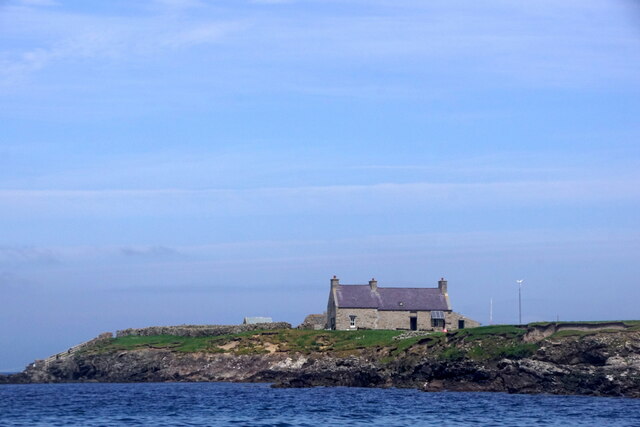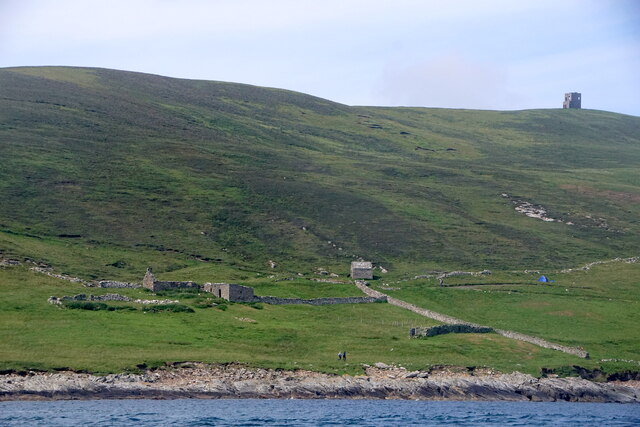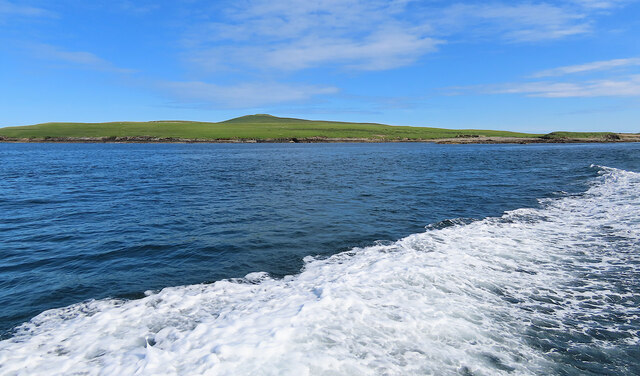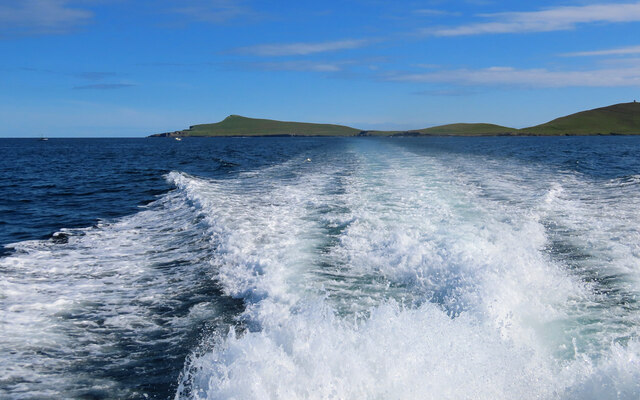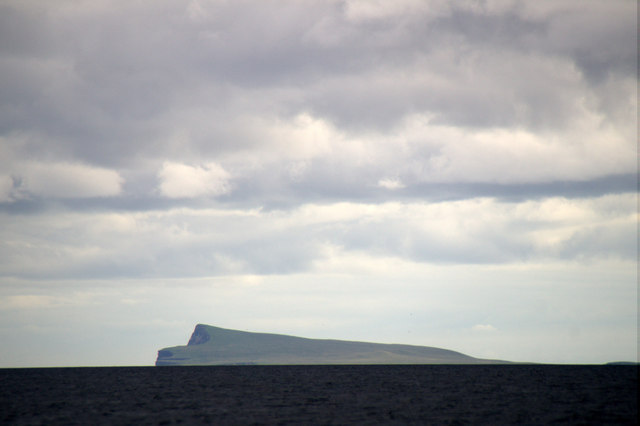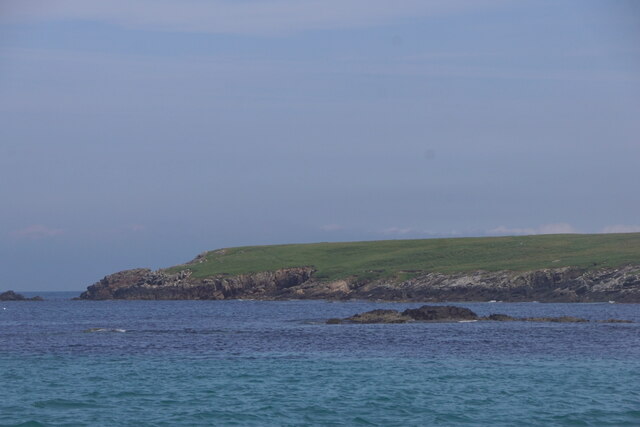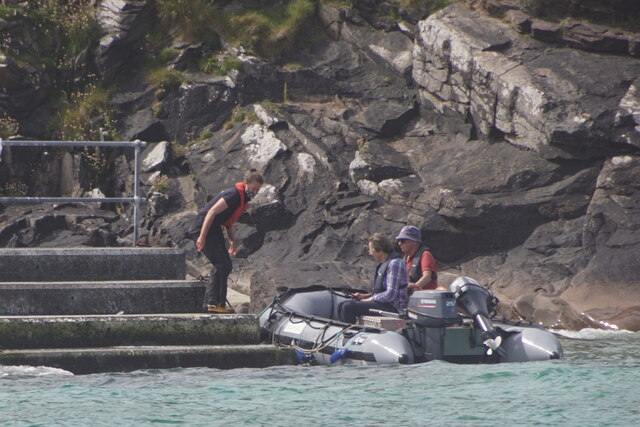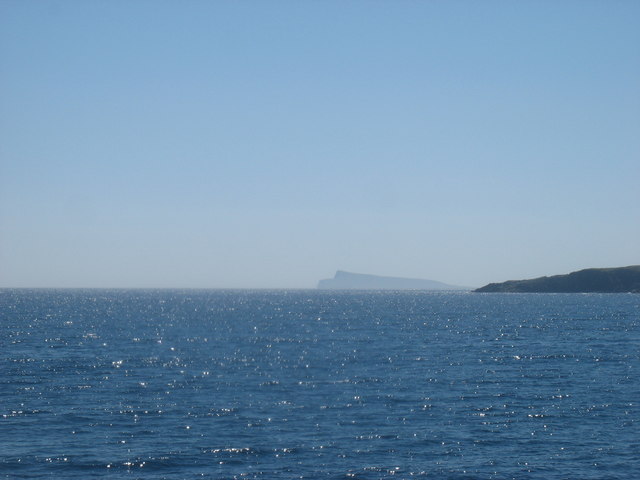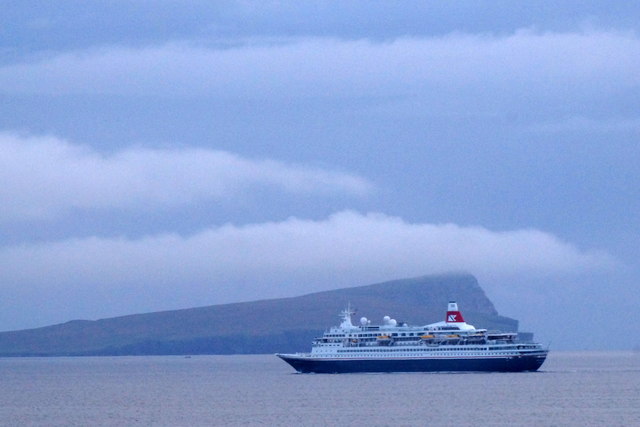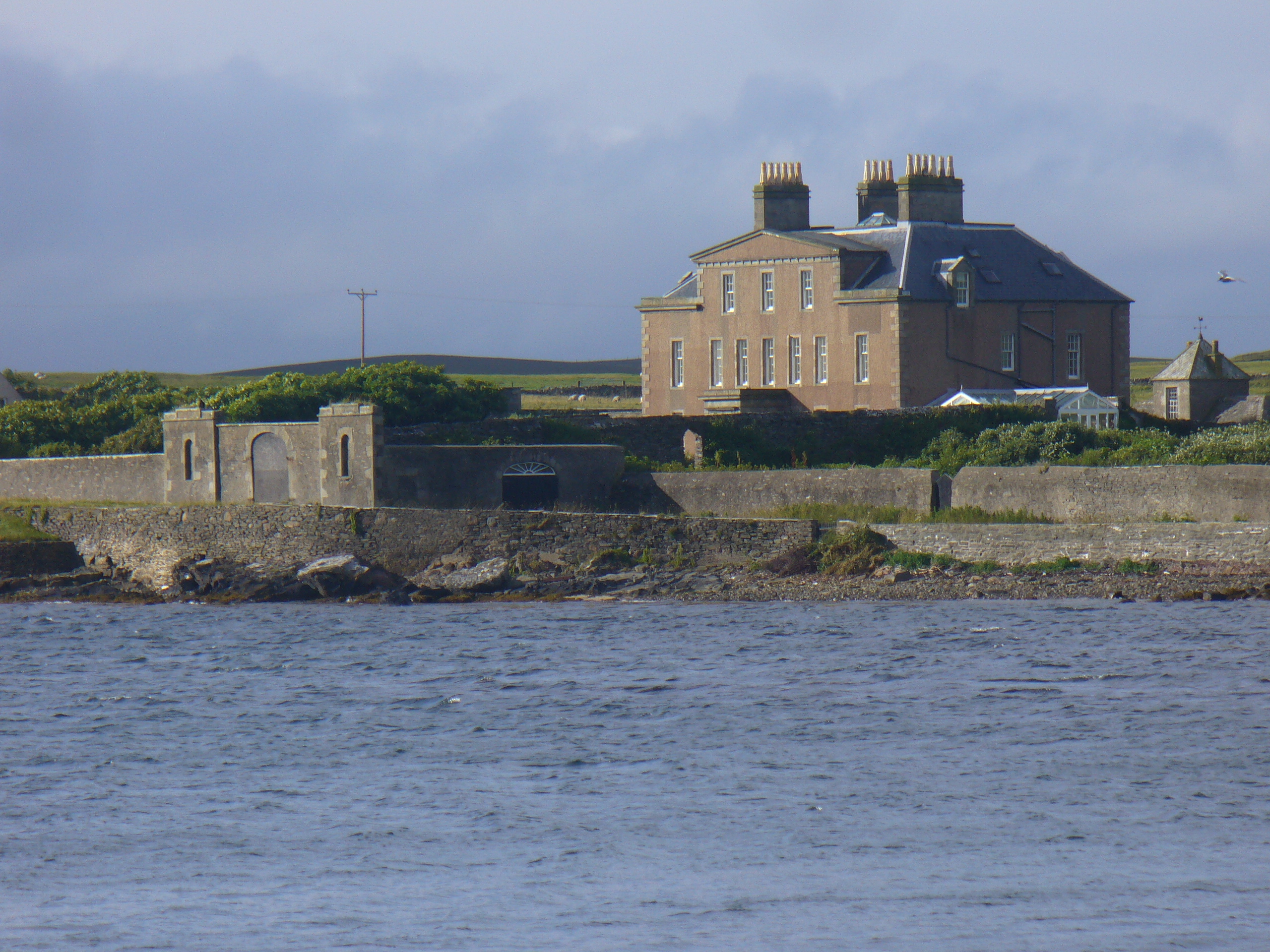Isle of Noss
Island in Shetland
Scotland
Isle of Noss
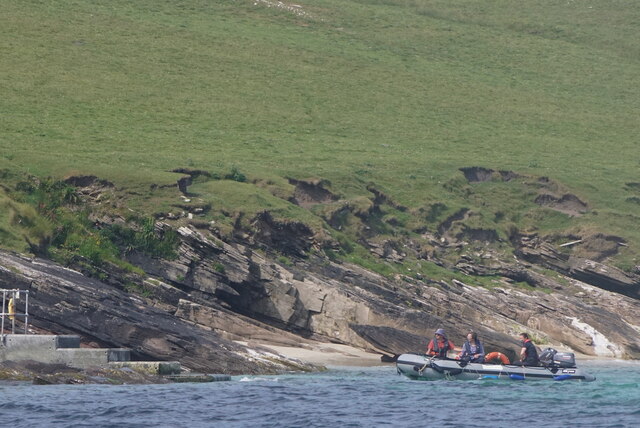
The Isle of Noss, located in the Shetland Islands of Scotland, is a small island known for its stunning natural beauty and diverse wildlife. Covering an area of approximately 313 hectares, it lies off the east coast of the larger island of Bressay, and is separated from it by the narrow Noss Sound.
The island is characterized by its dramatic cliffs, which reach heights of up to 180 meters, and its rugged terrain. These cliffs provide nesting sites for an array of seabirds, including over 150,000 pairs of gannets, making it one of the largest gannetries in the country. Visitors to the island can witness the mesmerizing sight of gannets diving into the sea in search of fish.
Apart from gannets, the Isle of Noss is also home to numerous other bird species, such as puffins, guillemots, razorbills, and fulmars. The island boasts a rich biodiversity, with its grassy slopes and heathland supporting a variety of plant species, including orchids and primroses.
Access to the Isle of Noss is restricted during the breeding season, which typically runs from April to August, to protect the fragile ecosystem and ensure the undisturbed breeding of its feathered inhabitants. However, guided boat tours are available during this time, allowing visitors to experience the island's natural wonders from a safe distance.
In addition to its ecological importance, the Isle of Noss offers breathtaking views of the surrounding coastline and is a popular destination for hikers and nature enthusiasts. Its rugged landscapes and abundant wildlife make it a must-visit location for anyone seeking an authentic and awe-inspiring Scottish island experience.
If you have any feedback on the listing, please let us know in the comments section below.
Isle of Noss Images
Images are sourced within 2km of 60.143887/-1.025296 or Grid Reference HU5440. Thanks to Geograph Open Source API. All images are credited.
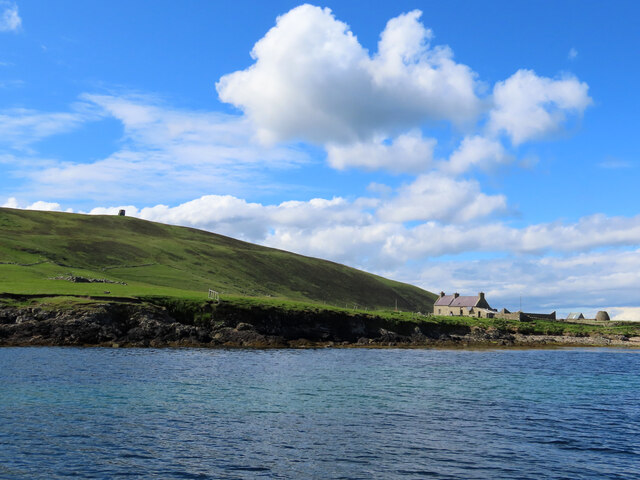
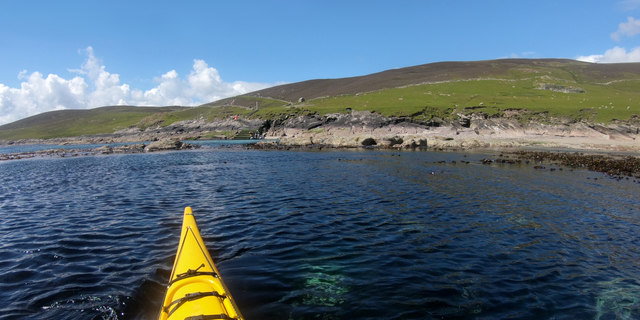
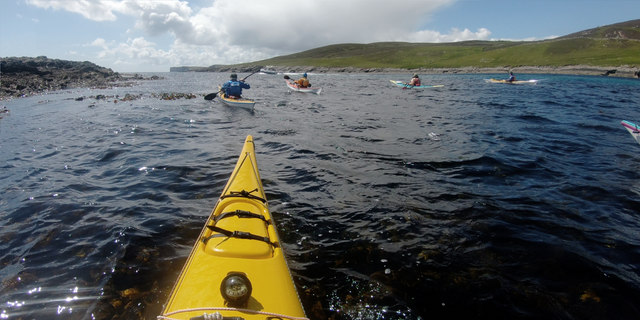
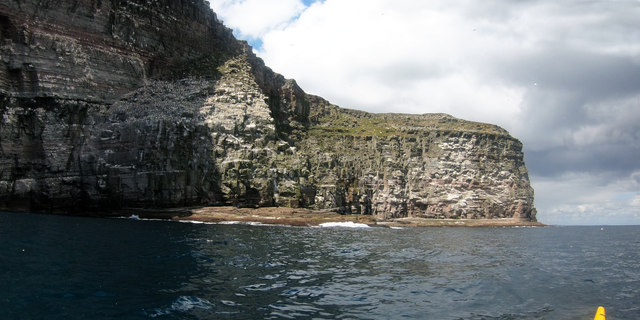
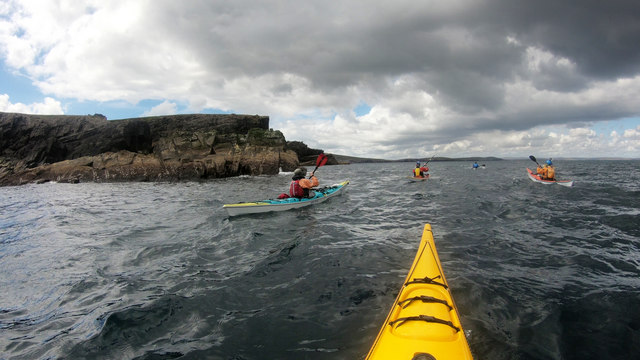
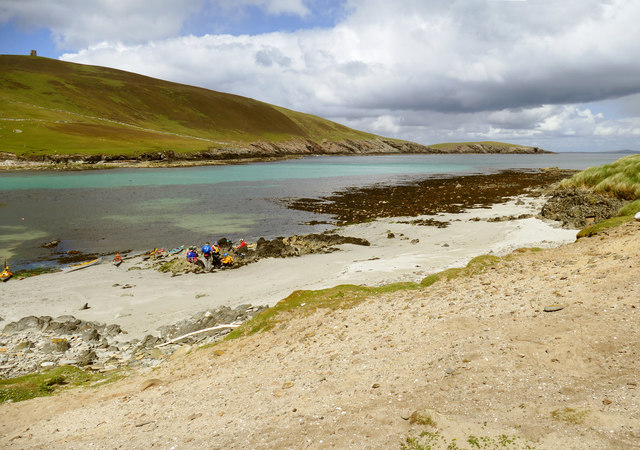
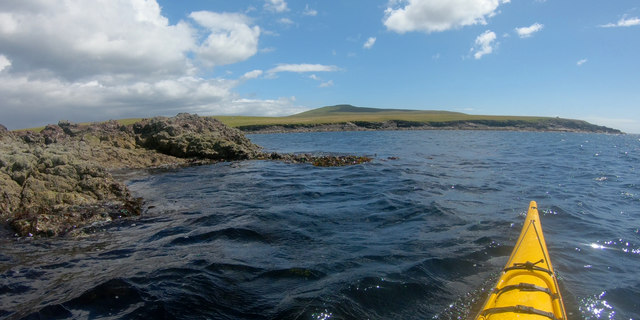
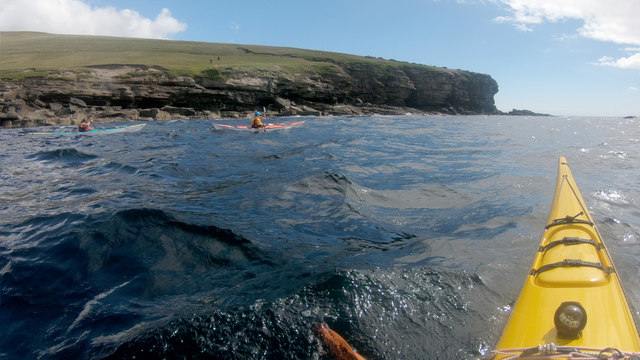
Isle of Noss is located at Grid Ref: HU5440 (Lat: 60.143887, Lng: -1.025296)
Unitary Authority: Shetland Islands
Police Authority: Highlands and Islands
What 3 Words
///land.screeches.furnish. Near Lerwick, Shetland Islands
Nearby Locations
Related Wikis
Isle of Noss
The Isle of Noss or Noss (Scots: Noss) is a small, previously inhabited island in Shetland, Scotland. Noss is separated from the island of Bressay by the...
Holm of Noss
The Holm of Noss or Cradle Holm is an uninhabited islet of the Shetland Islands. It is about 48m at its highest point. == Geography and geology == It is...
Broch of Cullingsburgh
The Broch of Cullingsburgh is an Iron Age broch located in the Shetland islands. == Location == Located on Bressay, off the east coast of mainland Shetland...
Voe of Cullingsburgh
Voe of Cullingsburgh is a large sea loch off the Shetland island of Bressay, voe meaning "sea inlet" in Shetland dialect. The local spelling of the name...
Bressay
Bressay (Scots: Bressa) is a populated island in the Shetland archipelago of Scotland. == Geography and geology == Bressay lies due south of Whalsay, west...
Bressay transmitting station
Bressay transmitting station is a broadcasting transmission facility for the Shetland Islands, located on the isle of Bressay, owned and operated by Arqiva...
Gardie House
Gardie House is an 18th-century estate house on Bressay in Shetland, Scotland. Located opposite Lerwick, across the Bressay Sound, Gardie is described...
Lerwick and Bressay Parish Church
Lerwick and Bressay Parish Church is the largest Church of Scotland congregation in Shetland, serving the islands' capital Lerwick and the surrounding...
Have you been to Isle of Noss?
Leave your review of Isle of Noss below (or comments, questions and feedback).
